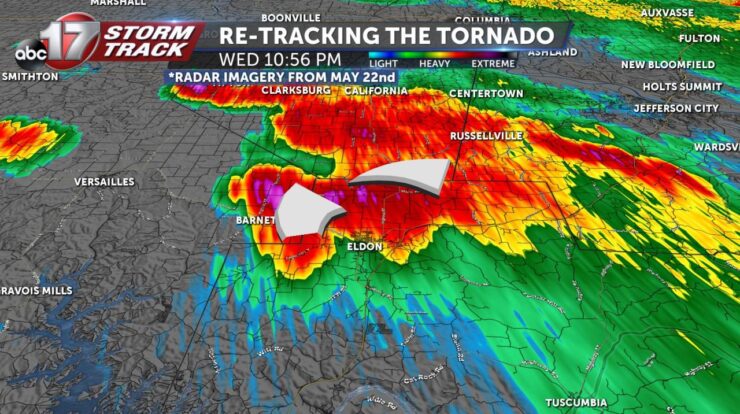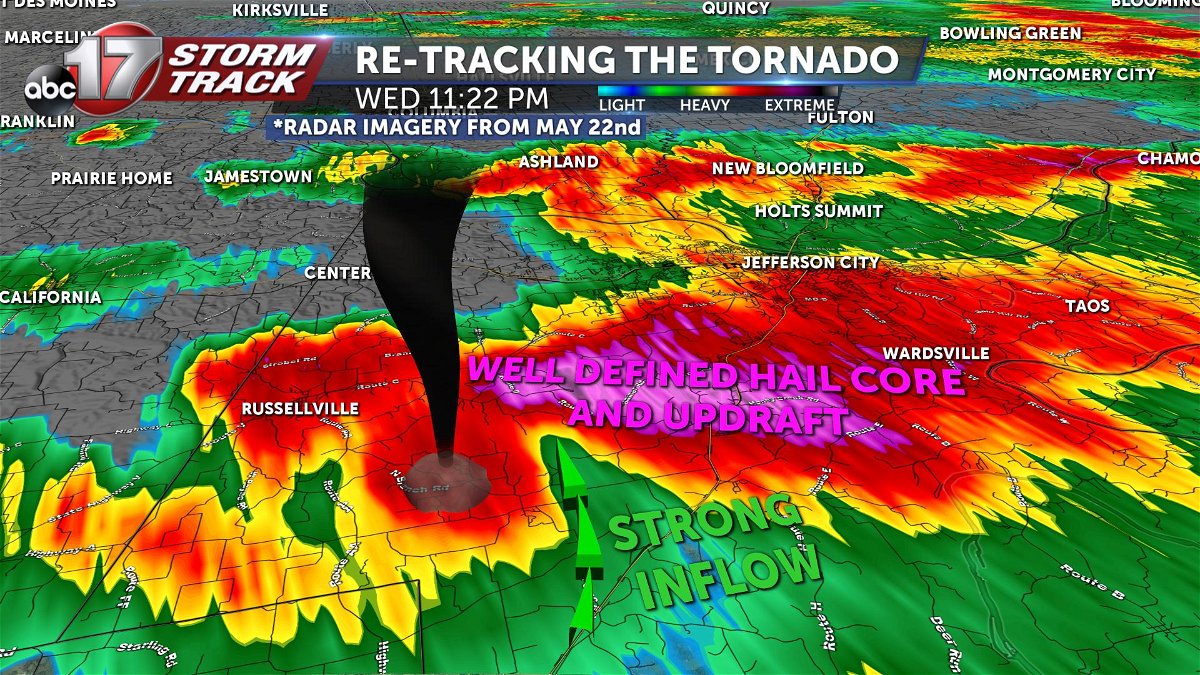
Tornado Tracker: Delve into the captivating world of tornado tracking, where cutting-edge technologies and scientific prowess converge to unravel the mysteries of nature’s most formidable force.
From radar’s watchful gaze to satellite’s panoramic view and weather stations’ intricate network, a symphony of instruments orchestrates a comprehensive surveillance of tornadoes, empowering us to predict their paths, safeguard lives, and mitigate their devastating impacts.
Tornado Tracking Technology

Tornado tracking technology encompasses various instruments and methods employed to detect, monitor, and forecast tornadoes. These technologies play a crucial role in providing timely warnings and enhancing our understanding of these destructive weather phenomena.
One of the primary technologies used in tornado tracking is radar. Doppler radar systems emit electromagnetic waves that bounce off objects in the atmosphere, allowing meteorologists to observe wind patterns and identify areas of rotation. By analyzing the speed and direction of these winds, radar can provide real-time information about the location and movement of tornadoes.
Satellites also contribute to tornado tracking by providing a broader perspective. Geostationary satellites monitor weather patterns over large areas, allowing meteorologists to track the development and movement of storm systems that may produce tornadoes. Polar-orbiting satellites provide high-resolution images of Earth’s surface, which can be used to identify areas of damage and debris left behind by tornadoes.
Weather stations located on the ground provide valuable data for tornado tracking. These stations measure wind speed and direction, temperature, humidity, and pressure, which can be used to identify conditions that are conducive to tornado formation. Additionally, weather balloons are released into the atmosphere to collect data on wind patterns and atmospheric conditions.
Strengths and Limitations of Tornado Tracking Technologies
Each tornado tracking technology has its own strengths and limitations. Radar provides real-time information about tornadoes, but its accuracy can be affected by terrain and distance. Satellites offer a broad perspective, but they may not be able to detect tornadoes in their early stages of development.
Weather stations provide detailed data, but their coverage is limited to specific locations.
By combining data from multiple sources, meteorologists can improve the accuracy and reliability of tornado tracking. However, it is important to note that no technology can perfectly predict tornadoes, and there is always a degree of uncertainty involved in forecasting these events.
Tornado Forecasting and Prediction: Tornado Tracker

Tornado forecasting and prediction involves a combination of weather models, data analysis, and expert knowledge. Meteorologists use computer models to simulate atmospheric conditions and predict the likelihood of tornado formation. These models incorporate data from radar, satellites, weather stations, and other sources to generate forecasts.
Data analysis plays a crucial role in tornado prediction. Meteorologists examine historical tornado data, weather patterns, and atmospheric conditions to identify factors that are associated with tornado formation. This information is used to develop statistical models that can predict the probability of tornadoes occurring in specific areas.
Expert knowledge is also essential in tornado forecasting. Meteorologists rely on their experience and understanding of weather patterns to interpret data and make predictions. They can identify subtle cues and anomalies that may not be captured by computer models.
Challenges and Uncertainties in Tornado Forecasting, Tornado tracker
Despite advances in technology and data analysis, tornado forecasting remains a challenging task. The atmosphere is a complex system, and there are many factors that can influence tornado formation. Additionally, tornadoes can develop rapidly and unpredictably, making it difficult to provide timely warnings.
The uncertainty involved in tornado forecasting means that there is always a risk of false alarms or missed tornadoes. However, by combining multiple forecasting techniques and incorporating expert knowledge, meteorologists can improve the accuracy and reliability of tornado predictions.
Tornado Safety and Preparedness
Staying safe during a tornado requires preparation and awareness. Having a tornado safety plan and knowing where to seek shelter can significantly increase your chances of survival.
The safest place to be during a tornado is in a below-ground shelter, such as a basement or storm cellar. If you do not have access to a below-ground shelter, seek shelter in the lowest level of a sturdy building, away from windows and exterior walls.
In the event of a tornado warning, act quickly and calmly. Seek shelter immediately and stay there until the storm has passed. If you are caught outside, lie down in a ditch or low-lying area and cover your head with your hands.
Importance of Tornado Warnings and Alerts
Tornado warnings and alerts are essential for keeping people informed and safe during tornado events. These warnings are issued by the National Weather Service (NWS) when a tornado has been detected or is imminent.
When a tornado warning is issued, take immediate action to seek shelter. Stay tuned to local news and weather stations for updates on the storm’s location and movement.
Tornado Climatology and Impacts
Tornado climatology involves studying historical tornado data to identify patterns and trends in tornado occurrence. This information is used to assess the risk of tornadoes in different regions and to develop mitigation strategies.
Tornado data is collected from a variety of sources, including eyewitness accounts, damage surveys, and radar observations. This data is used to map the geographic distribution of tornadoes and to analyze their frequency and intensity.
Tornadoes can have significant social, economic, and environmental impacts. They can cause widespread damage to buildings, infrastructure, and agriculture. Tornadoes can also result in injuries and fatalities.
Tornado Patterns and Trends
Tornado patterns and trends can vary by region and season. In the United States, tornadoes are most common in the central and southeastern regions during the spring and summer months. However, tornadoes can occur anywhere and at any time of year.
Climate change is expected to affect tornado patterns and trends in the future. Some studies suggest that tornadoes may become more frequent and intense in certain regions as the climate warms.
Tornado Research and Mitigation
Ongoing research efforts aim to improve tornado forecasting and tracking, as well as to develop new strategies for mitigating tornado damage.
Meteorologists are working to develop more accurate computer models and data analysis techniques for tornado prediction. They are also exploring the use of new technologies, such as mobile radar and unmanned aerial vehicles, to enhance tornado tracking and monitoring.
Engineers and architects are developing new building codes and construction techniques to make structures more resistant to tornadoes. Additionally, researchers are working to develop early warning systems that can provide more time for people to seek shelter.
Role of Public Education and Outreach
Public education and outreach play a vital role in promoting tornado safety. By educating people about tornadoes and the importance of being prepared, we can help to reduce the risk of injuries and fatalities.
Tornado safety education programs should focus on teaching people about the risks of tornadoes, how to recognize the signs of a tornado, and what to do to stay safe during a tornado event.
Last Word
As the relentless pursuit of knowledge continues, tornado trackers stand as beacons of hope, empowering us to outsmart the wrath of nature and build resilient communities that can weather the storms.
FAQ Compilation
How do tornado trackers work?
Tornado trackers utilize a combination of technologies, including radar, satellites, and weather stations, to detect and track tornadoes. Radar emits radio waves that bounce off objects, providing information about their location, speed, and direction. Satellites monitor atmospheric conditions that favor tornado formation.
Weather stations measure wind speed, pressure, and temperature, providing valuable data for forecasting and tracking tornadoes.
Can tornado trackers predict tornadoes with 100% accuracy?
While tornado trackers have significantly improved our ability to forecast and track tornadoes, predicting them with 100% accuracy remains a challenge. Tornadoes are highly localized and can develop rapidly, making it difficult to pinpoint their exact location and timing. However, tornado trackers provide valuable lead time, allowing people to seek shelter and take precautions.
What should I do if a tornado warning is issued?
If a tornado warning is issued, seek shelter immediately in a sturdy building or underground. Stay away from windows and exterior walls. If you are outside, lie flat in a ditch or low-lying area and cover your head with your hands.





